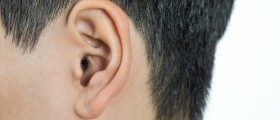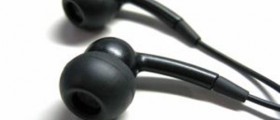
The main trigger of hearing loss is usually age. Namely, as we grow older, our ears get less and less resistant to the noise around us, and our cochlea gets damaged due to this “wear and tear” process. However, hearing loss may not need to take place in the long run. Rather, infections, inflammation, diseases, injuries and earwax blockage may result in the same health issue.
Diagnosis of Deafness in Infants
Once you seek medical attention regarding your child's hearing impairment, he/she will likely direct you to an ENT specialist. This doctor will perform numerous hearing tests on the child and will conduct a physical exam too.
Some of the tests done may involve the basic audiogram which serves as a comparative tool for depicting levels of hearing loss. Alternatively, tympanometry may be necessary, being a test of the efficiency of the eardrum and the middle ear.
Furthermore, stapedial reflexes and reflex decay may also be checked, assessing whether your child's hearing nerve is working correctly or not. Also, certain tests may help the doctors perceive how your child's ear receives and transfers sound impulses, allowing them to see anomalies, if any are present.
Additionally, the child may be told a sentence in situations where noise is present, allowing the doctors to see whether he/she received the verbal message or not. If there are problems in this area, a hearing aid or a cochlear implant may be necessary.
Newborns are screened for hearing loss by having a microphone placed in their ear. Finally, an X-ray and CT scans may show any physical problems while a balance test can reveal such problem in a patient with hearing loss.
Complications and Treatments
The above mentioned tests may show problems such as presbycusis, affecting the inner ear, being inoperable and treated by hearing aids or cochlear implants.
Alternatively, a middle ear infection may lead to a perforated eardrum. Then, antibiotics may be used for treatment. If these fail to fix the problem, a surgical procedure is performed.
If the mastoid bone, behind the ear, is infected, this condition is treated with antibiotics and, if necessary, surgery. Also, the three tiny bones in the middle ear may grow excessively and start being dysfunctional. In this case, surgery or hearing aids are possible ways of treatment.
Sometimes, tumors are found in the area and are treated by radiation therapy or microsurgery. On the other hand, if balance problems are affecting the person with hearing loss, he/she will need to undergo various additional tests and treatments, revealing underlying conditions behind the problem. Finally, middle ear cysts are dealt with antibiotics, drainage procedures or surgery.















-In-Infants-And-Older-Children_f_280x120.jpg)

Your thoughts on this
Loading...